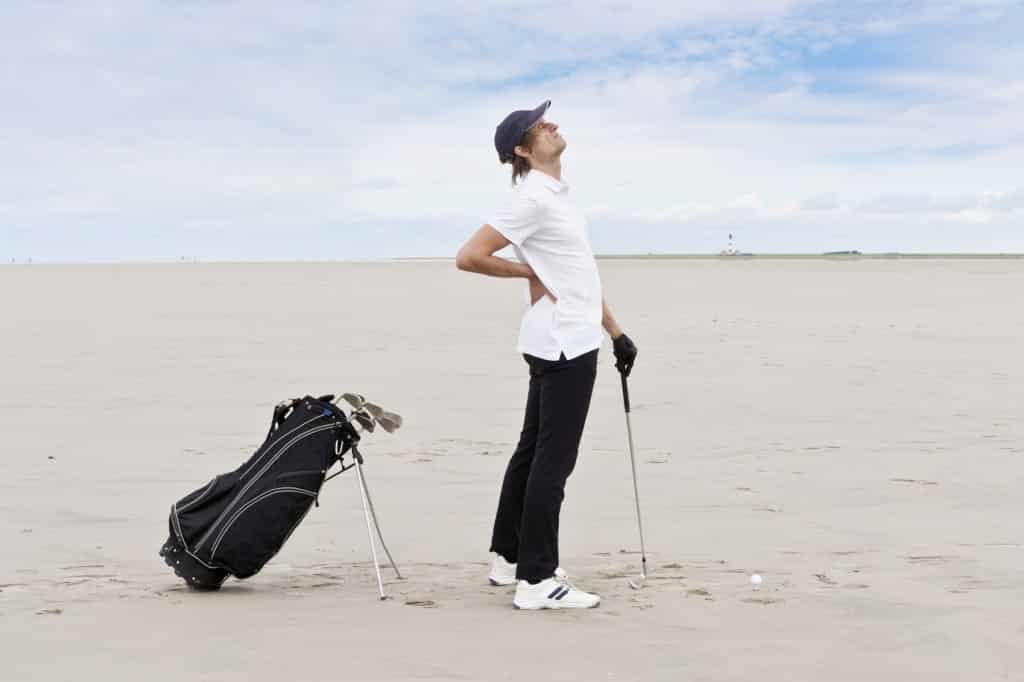Did you know that out of all professional athletes, golfers have the highest incidence of low back pain? Sunny summer skies set the perfect scene for golfers getting back into the swing of things. We’re here to help you make the most of tee time with the least amount of pain.
From Backswing to Back Pain
The most common golf injuries include:
- Lower back strain
- Rotator cuff injury
- Fractured hook of hamate (rare, golf-specific)
- Elbow (golfers’ and tennis elbow)
- Wrist and hand sprains
- Knee joint stress
Mind your posture during your swing; your body will thank you for it. Consider these tips to correct your swing:
- When a golfer uses heavy wrist action in their backswing in to increase their range of motion for a harder swing and more force on the golf ball, it causes a tight contraction in the lead arm and on the forearm on the other side. Repeating this motion can lead to ‘golfers elbow’, a form of tendonitis, due to poor flexibility in the spine, where the arms try to compensate for poor core strength.
- When a golfer tries to create momentum by shifting his or her hips backward with the backswing, then sway forward as they bring the club through, they tend to develop back and hip problems over time, as well as an unbalanced shot. Rather, to improve the shot, shifting the weight from the back foot to the front foot will improve momentum as well as protecting the low back. Weight-shifting also prevents turning the shoulder and thoracic spine, which protects against the risk of stress fractures in the ribs and sprain and strain of the rotator cuff.
Other Ways of Preventing Golf Injuries
- Walk the Walk – Walking a golf course is a rough equivalent of a 10-kilometer walk with a lot of cardiovascular demand. You can improve your endurance by going on a few walks per week, or engaging in other cardio exercises to for upkeep. Talk to your physiotherapist for suggestions.
- Warm-up – Like anything that’s been dormant for a while, build up to your best swing over time. Most golf injuries are from overuse, so start off slow with easy swings using an 8 or 9 iron, and work your way up. Stretches and exercises that focus on hip rotation, core stability and shoulder mobility can be an integral tool for strengthening and protecting your body during golf. Warming up before a game should take 10-20 minutes. Your physiotherapist can recommend the best movements for your personal maintenance.
- Take your time and pace yourself; if golf was meant to be a quick game, the holes would be a lot closer together.
- Get the proper equipment – Golf clubs are not one-size fits all! Before you play, make sure your clubs are suited to your height and handedness. A poorly sized club affects your swing and your movements; consult an expert to find the best club for your build.
As always, if you feel prolonged or severe pain following your day of golf, consult your physiotherapist to safeguard against any serious injury. Your physiotherapist can help you with modifications to your movement and strategies to prevent future pain and injury, while working towards keeping your current pain under control.
The Canadian Physiotherapy Association (CPA) provided a handy downloadable guide for S.M.A.R.T golfing, the tips have been prepared for you to get the most enjoyment out of a healthy and active golf season.
